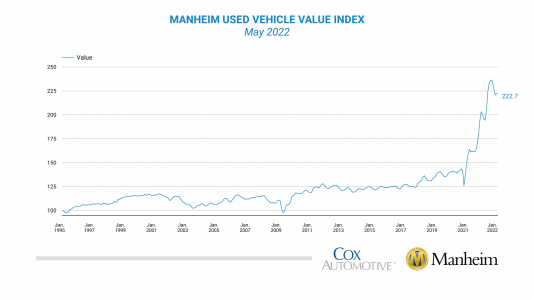Many industries use wholesale price changes to re-price current inventory. Example:
--Car Dealers--
Old School: Price to Market = car dealers set prices based on observing their competitors.
New School: Car dealer's retail price strategies are based on today's wholesale prices.
Actually, the new school pricing strat should add data for both supply and demand. It should pull in today's wholesale prices AND the TREND of the wholesale prices (see chart), and retail traffic stats from internet shoppers (marketplace & dealer's site). Almost new Used autos need to be aware of new car prices, supply and incentives.
No wonder Wall Street struggles to disrupt our industry
Just some coffee thoughts from Uncle Joe

- Old School: Gas stations set prices based on observing their competitors.
- New School: Gas Station retail price strategies are aware of today's gasoline wholesale prices (incl.'ing volatility and trend).
--Car Dealers--
Old School: Price to Market = car dealers set prices based on observing their competitors.
New School: Car dealer's retail price strategies are based on today's wholesale prices.
Actually, the new school pricing strat should add data for both supply and demand. It should pull in today's wholesale prices AND the TREND of the wholesale prices (see chart), and retail traffic stats from internet shoppers (marketplace & dealer's site). Almost new Used autos need to be aware of new car prices, supply and incentives.
No wonder Wall Street struggles to disrupt our industry
Just some coffee thoughts from Uncle Joe







